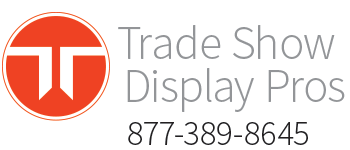A trade show is an excellent platform for launching a new product and building brand awareness. And by using engaging trade show displays, you can capture the attention of visitors and convert them into paying customers.
But the biggest challenge here is ensuring you’re getting the absolute most out of your trade show investments. It’s essential that you do a cost-benefit analysis at the end of a trade show to determine if such an event is profitable for you. You can do this by tracking the following metrics:
Metric #1: Number Of Sales Made By Each Rep
The primary reason why B2B companies attend trade shows is to win new customers and generate sales. The number of sales each rep makes is a metric that’ll help you determine whether or not you were able to meet sales goals. You’ll also need to track the average order value as well. Both metrics are critical when you’re trying to determine trade show booth ROI, and they’ll help you establish fair staff pay and sales strategies.
Metric #2: Booth Visits
The reality is that while trade shows are an excellent way to generate brand awareness, most booth visitors are unlikely to make a purchase on the same day. You need to follow up with interested visitors later to get them to convert. Hence, another crucial metric to track is the number of booth visitors that become qualified leads. Have a sign-in sheet at your booth and use this sheet later on to follow up with leads who you think have a good shot of becoming customers.
Metric #3: Social Media Engagement
Trade shows are an excellent way to increase brand awareness. You can measure this by tracking several metrics like social media mentions, site visits, online engagements, likes, shares, and reposts after the event. If you notice an increase in social media followers after the event, it means that participating in the trade show helped with increasing brand awareness.
Metric #5: Customer Retention
Your trade show staff might be more focused on closing new deals and capturing qualified leads. But what about your existing customers? For example, let’s assume that an existing customer visits the trade show. They are a prime target for your competitors! You don’t want to lose existing customers to your competitors, so you need to ensure that you treat existing customers like VIPs.
Advance invitations, a warm welcome, and special treatment when they visit the booth are all a must. You can also provide access to special events and give exclusive goodies to make your current customers feel valued, reinforcing their loyalty.
Metric #5: Sales Cycle
Sales cycle is a measure of how long it takes (on average) for your trade show team to convert an interested lead into a paying customer. If the sales cycle is short, there’s a good chance you can sell a lot of products at an event. However, if your products are expensive, the sales cycle might be longer. In the latter case, you can alter your trade show strategy to focus more on capturing qualified leads.
Get The Absolute Most Out Of A Trade Show
Participating in trade shows is an expensive affair. You have to pay the exhibit fee, invest in versatile trade show display stands, pay trade show booth attendants, and spend on marketing. If you’re going to invest in a trade show booth, you need to ensure you’re getting maximum ROI from the event. The best way to determine the value of your investment is by tracking the five critical trade show metrics mentioned in this article. By understanding these metrics, you can determine what’s working and what needs to be fixed before the next event.
